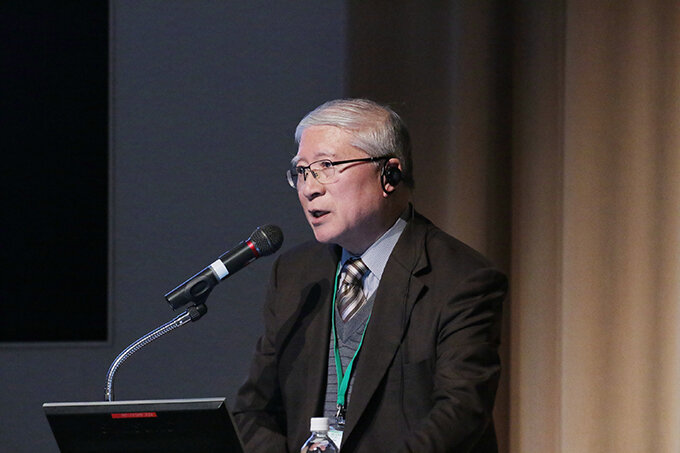THE THIRD GLOBAL INTERACTIVE FORUM ON TRAFFIC & SAFETY
Thank you so much for your participation in the Symposium on 17th November, 2017.
Outline
Title:THE THIRD GLOBAL INTERACTIVE FORUM ON TRAFFIC & SAFETY
Venue:U Thant International Conference Hall(3F) , United Nations University,
5-53-70 Jingumae Shibuya-ku, Tokyo 150-8925, Japan
Date:Friday, November 17, 2017
Host:International Association of Traffic and Safety Sciences (IATSS)
Opening Address
Kazuhiko Takeuchi
IATSS President
President, Institute for Global Environmental Strategies (IGES) / Director and Project Professor, Integrated Research System for Sustainability Science (IR3S), The University of Tokyo
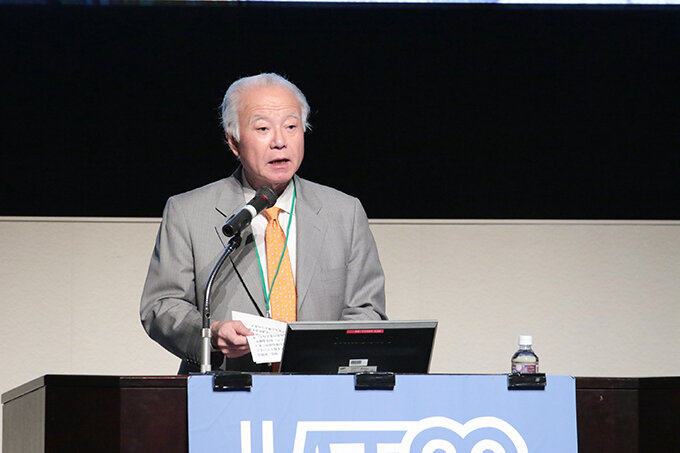
Prof. Kazuhiko Takeuchi opened by welcoming the participants and thanking the expert speakers and organizers who made the Global Interactive Forum on Traffic & Safety (GIFTS) possible. For over 40 years, IATSS has been instrumental in contributing to the realization of an ideal traffic society through research and other activities on traffic and safety. As global traffic environments have undergone enormous rapid changes, safety has become an urgent challenge as accidents increase, particularly in developing countries.
In conjunction with traffic culture, other problems such as global warming and inequality must be tackled. For this, IATSS has been taking a transdisciplinary approach with different stakeholders providing diverse perspectives, removing the walls between academic fields and between academia and society. From a global perspective, collaboration is being pursued related to challenges of traffic around the world.
GIFTS 2017 is the third in a series of symposia held as IATSS approaches its 50th anniversary in 2024. Prof. Takeuchi stated his hopes that this year's symposium focusing on public space in traffic culture would contribute to creating a desirable traffic society. Prof. Takeuchi closed his address by stating his wishes for an active discussion.
Objective Description
Takashi Oguchi
IATSS Member, Chairman of International Forum Executive Committee Professor, Institute of Industrial Science, The University of Tokyo
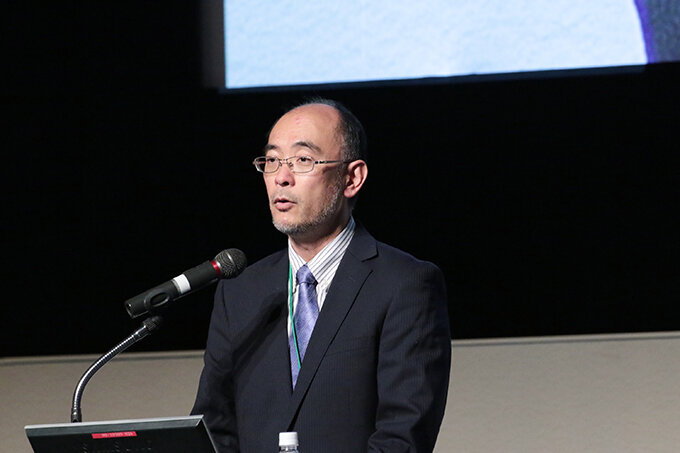
Prof. Takashi Oguchi began by thanking the speakers and participants. He noted that the symposium aims to realize an ideal traffic society through an approach that incorporates diverse societal and cultural perspectives, as well as leaders in traffic activities outside of academia. Prof. Oguchi then gave short introductions of the experts who gave the keynote addresses, as well as the panelists. He said he expected different perspectives to be raised, and that he looked forward to a fruitful discussion.
Keynote Address 1
David Sim
Architect SAR / MSA
Creative Director, Partner, Gehl
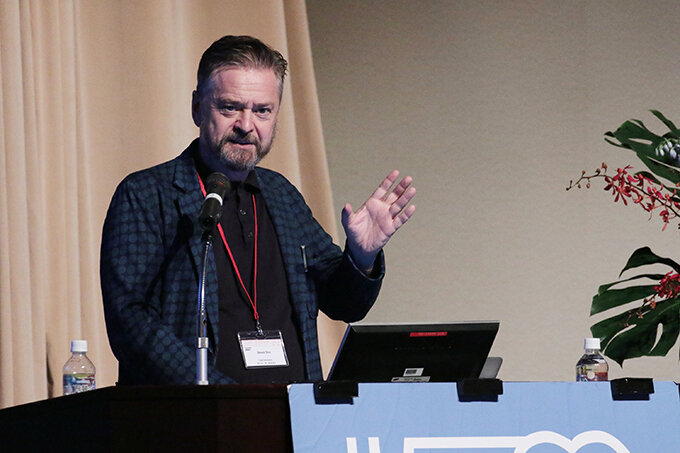
Dr. David Sim gave a presentation entitled The Human Dimension in Traffic Culture. He noted that his presentation included several hundred slides with photographs to illustrate his points. Transportation is recognized as the biggest problem in cities around the world. Although we must of course measure quantitative aspects such as traffic flow, we must always truly emphasize the human dimension of the people who live in big cities. This is vital because although we have multitudes of data about traffic, data about pedestrians and public life is relatively scarce. Jan and Ingrid Gehl have concentrated on mapping and collecting data on public life.
Dr. Sim then asked the audience to contemplate the relationship between people and traffic. He raised thought-provoking examples, including an area in Basel, Switzerland where people walk freely amongst tram tracks, and pointed out that cities are filled with people who are thinking more about their daily lives than their own safety. He also showed the Daikanyama neighborhood of Tokyo, where pedestrians, cars, and other vehicles somehow coexist on the streets.
Walking, cycling, public transport, and public space can be thought of as making up a puzzle. Addressing walking first, Dr. Sim asked the audience to think about what makes streets nice places to walk, human interaction, and small human connections in public spaces that make life better. When thinking about designing spaces, experts should consider human psychology, including the fact that humans take the shortest route that involves the least effort, even if it happens to be more dangerous. They should also consider the important role of nature for aspects such as health and economic benefits, as patients get better faster when they can see trees and walking in the fresh air has great health benefits for pedestrians.
Dr. Sim then examined success in Copenhagen in the creation of public spaces since the 1960s, when a new movement changed how space was used and made pedestrians a priority. For example, a parking lot along a beautiful canal was converted to public space, creating an area now enjoyed by hundreds of pedestrians that once held just 60 cars. Extending physical sidewalk features into the streets, or making streets closer together at crossings, are simple to execute and achieve a large impact in prioritizing pedestrians.
Dr. Sim then spoke about cycling, noting that a city of cyclists makes for a friendlier city than one with people hidden away in cars. However, the challenge is making cycling safe. Copenhagen has created a simple, clear, and safe system that always involves respectively a sidewalk, curb, bicycle track, curb, parked cars, and finally the driving lane. This way, pedestrians are protected by cyclists, and the cyclists are protected by the parked cars. New York, on the other hand, has bike lanes between parked cars and the driving lane, which presents safety problems. Copenhagen's system has meant that more than 40% of people commute by cycling, and in the city center that number is 60%.
A study was conducted on why people cycle in Copenhagen. Only 1% cared about the environment, 6% cared about the low cost of cycling, and 20% said they cycled for health reasons. The majority at 61% cited convenience for why they cycled. There is also an economic benefit to cycling, as every kilometer cycled means that Copenhagen makes money since maintaining car infrastructure is very expensive. There is much discussion on exporting the Danish model to other cities, and Melbourne now has new "Copenhagen style" bicycle lanes.
Moving to public transportation, Dr. Sim pointed out that combining cycling innovation with public transportation yields enormous benefits, with ideas such as allowing bicycles on subways. In addition, public transport should be made easier to use, including placing infrastructure like bus stops in popular locations that receive plenty of sunlight.
Finally, Dr. Sim stressed that rethinking public space is essential. An innovative example can be found in New York's Times Square. Previously, it was found that 90% of the area of Times Square was devoted to car space, and yet 90% of the people who were in Times Square were pedestrians. A quick, inexpensive change was undertaken to correct this imbalance by using paint to demarcate new public space in streets, and it proved to be a great success.
Simple, cheap, innovative ideas improve the daily lives of pedestrians, and just require a change in mindset. Such a cultural shift is also seen in Japan, with an example being Ginza's main shopping street that has been closed to cars. Combining public life with strategic traffic culture will make our cities and our lives better.
Keynote Address 2
Katsutoshi Ohta
IATSS Counsellor
Professor Emeritus, The University of Tokyo
Professor Katsutoshi Ohta delivered a presentation titled, "Thinking about Public Space and Automobile Traffic Culture: In the Context of Traffic Safety in the Age of Autonomous Driving." Noting that he was looking toward the future, he stressed the need to create a culture capable of adapting to autonomous driving, a topic that has not yet received sufficient attention.
Explaining that the use of smartphones by pedestrians has brought dramatic changes to travel behavior in recent years -and created new dangers- Prof. Ohta described his interest in looking at the street as a public space while considering the relationship between safety and traffic culture from an urban transport planning perspective.
He then explained the concepts of public space, traffic behavior, and the contexts. There may, for example, exist different concepts of public space. We must reconsider our understanding of public space in light of the way it is used by pedestrians and other transport participants, whose behavior is influenced by traffic culture and local characteristics.
Looking back on the history of research on behavior in public spaces, an interdisciplinary approach has been followed in Japan. The earliest example was Modernologio, published by Kon Wajiro in 1930. The book includes a diagram showing transport in front of Hirosaki Station, with rickshaws and other vehicles competing for space. It also includes the walking route of a "modern girl" of the 1930s and describes how transport influenced her behavior. The Japan Society of Lifeology, which was founded by Kon and others after the war, prioritized field observations in searching for what it means "to live." In recent years, Zhang Junyi and others have emphasized interdisciplinary research in their "Life-oriented Behavioral Studies".
Prof. Ohta then introduced an example of research at IATSS: an analysis of vehicle behavior based on the keyword "car body language" (CBL). Driving behavior varies by region, and there are recognized local rules and manners regarding the use of vehicle equipment and the body. Prof. Ohta also explained that younger drivers tend to communicate through the use of various devices, and to be more willful and self-centered than older drivers. These are issues of vehicle-to-vehicle (V2V) communication, and with the proliferation of autonomous vehicles (AV) will also become issues in communication with various other transport participants (V2X).
Next, Prof. Ohta discussed the notion of proxemics, proposed by Edward T. Hall, as a theory of behavior in public spaces. Proxemics includes the concepts of intimate distance zone, personal distance zone, social distance zone, and public distance zone, which Prof. Ohta described as important for analyzing safety communication among transport participants.
Prof. Ohta then discussed the history and current state of street planning and design by traffic engineers in Japan, noting that a bias toward automobile transportation functionality inhibited progress in responding to pedestrian, bicycle, and spatial functionality.
Prof. Ohta also mentioned the UK's Buchanan Report as the basis of street planning theory in Europe and the United States, emphasizing the importance of the Buchanan Principles including the separation of "urban corridors" (distributors, or space for movement) and "urban rooms" (environmental areas, or residential zones), a hierarchical structure of distributors by function, and a balance among the three basic factors of accessibility, living environment, and the costs. The Buchanan Report was written at a time when cars were proliferating in UK cities, something that was seen as a mixed blessing. There was broad acceptance of this approach to dealing with these "beloved monsters" but, in practice, policies and planning continued to move forward based on the convenience of the automobile. Today there is a need for similar research on autonomous vehicles.
Prof. Ohta then spoke about Peter Jones' new "Link and Place" approach. A "link" is a street as a conduit for movement, designed with the objective of saving time, while a "place" is a street as a destination for activity, designed with the objective of spending time. Today, there is increasing emphasis on "places." Using these concepts makes it possible to analyze various types of streets and how they are used.
Next, Prof. Ohta introduced innovative traffic policies in large cities in Europe and the United States such as London and New York. London Mayor Sadiq Khan's "healthy streets approach" aims to reduce the modal share of automobile use from 36% now to 20% by 2041 through an emphasis on using bicycles, improving public transport, promoting health, and mitigating congestion. London's human-centered vision calls for reduced automobile use and increased walking, cycling, and use of public transport. Similar efforts can also be seen in the United States, where the National Association of City Transportation Officials (NATCO) proposes principles and strategies for designing world-class streets for the twenty-first century. NATCO's Urban Street Design Manual establishes five principles for urban street design and promotes the inclusive design of streets as public places that are human-centric, healthy, and economically vibrant.
Prof. Ohta further touched on transportation and roadway engineering-based street design and planning and proposed some new ways to respond to transportation-related technological innovations such as autonomous driving, by introducing new concepts of basic units generalizing conventional design-standard vehicles and passenger car units. He noted the potential for applying proxemics to the analysis of transport behavior and volume, distance-based zones, and traffic accidents. Proxemics can be applied to analyzing transport functions and to measuring, as derived demand, the efficient supply of transportation services. It can also be used to analyze spatial functions and to provide time-space services as primary demand. This secures safe and comfortable time-space and maximizes opportunities for human interaction.
Prof. Ohta concluded his presentation by explaining time-space occupancy (TSO) as a basic unit of analysis for quantifying the behavior of transport participants, describing time-space exposure as an example of its application for analysis of environmental pollution and meeting chances, and proposing the approach of TSO slot use that generalizes the current concept of trips.
Panel Discussion
Moderator:Hirotaka Koike
Panelists:David Sim, Katsutoshi Ohta,Geetam Tiwari,Keiro Hattori
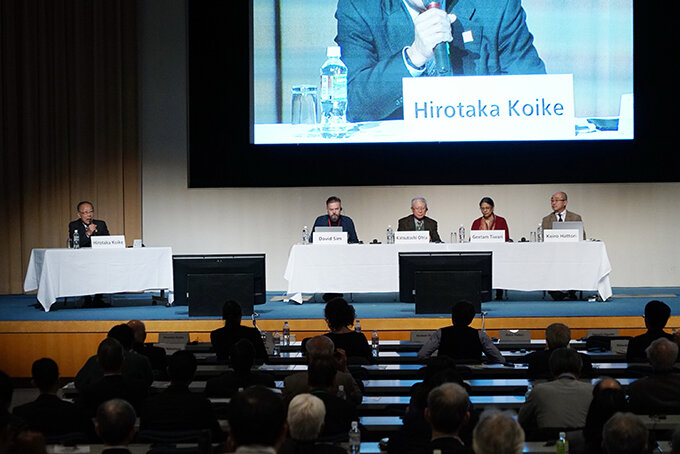
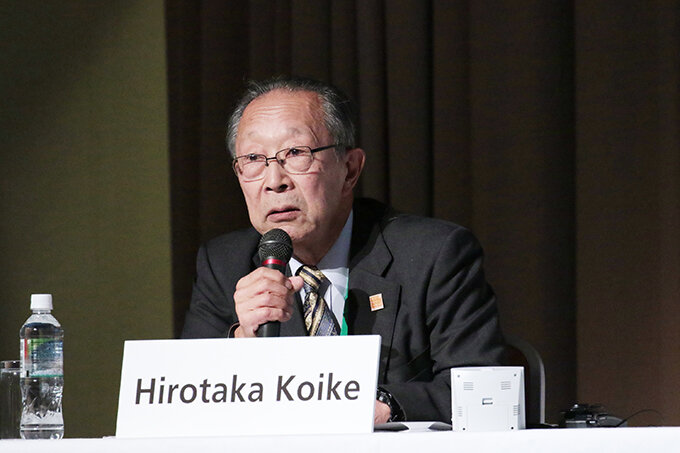
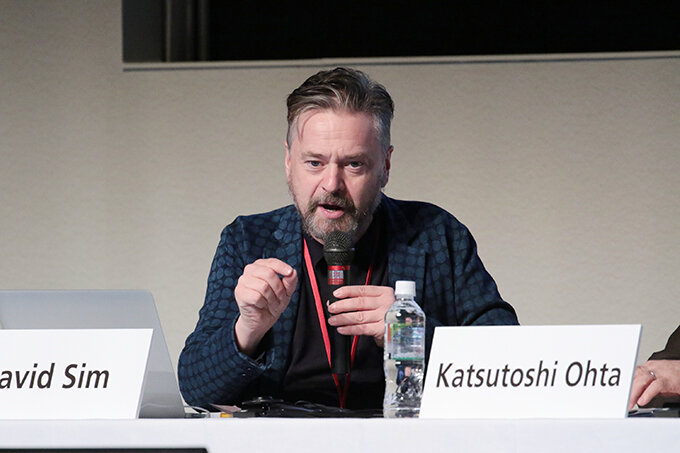

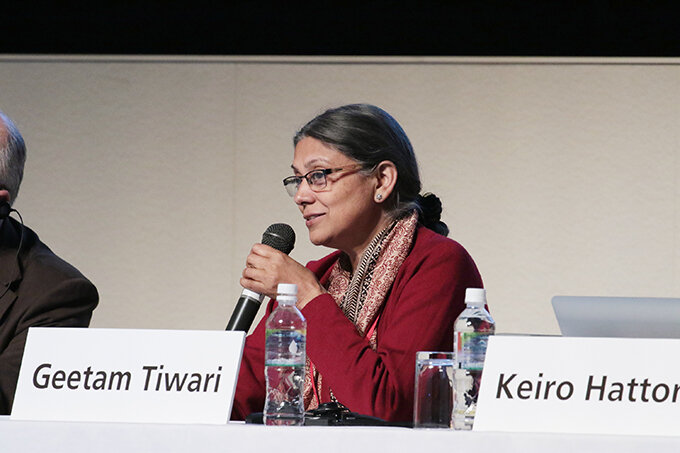
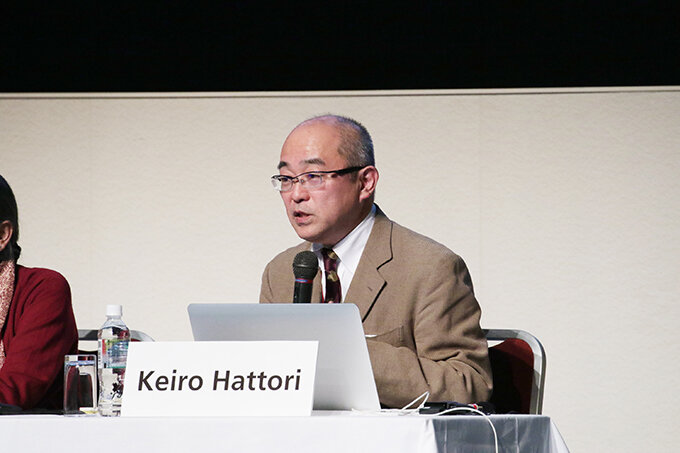
Prof. Hirotaka Koike, IATSS Counsellor / Professor, Faculty of City Life Studies, Utsunomiya Kyowa University began by thanking the keynote speakers for their presentations. He noted that traffic culture underwent a shift with the advent of the automobile, but is now undergoing a further large shift as the pedestrian is increasingly emphasized. Now there will be another shift as autonomous driving is implemented. We must learn how to live in this new era of "auto sapiens," as Prof. Ohta put it.
Prof. Geetam Tiwari, IATSS Overseas Invited Member / Ministry of Urban Development (MoUD) Chair Professor for Transport Planning, Department of Civil Engineering, Indian Institute of Technology (IIT) Delhi, gave a presentation entitled Streets and Public Spaces: Highway through a City (Agra). New cities are being constructed in developing countries, especially in Southeast Asia, and this represents an opportunity to do things differently. She showed a photograph of a national highway passing through a small city, which has been used completely differently from its stated function. It has become a mixed-use street, lacking many cars yet full of pedestrians and commuters on 2-wheel vehicles, with no segregation or defined space for vulnerable groups. It is a shared, unsafe situation.
Prof. Tiwari then showed an example of a space use and activity survey that yielded suggestions to better organize the displayed public roads and spaces. However, there has been little success in implementing such suggestions because decision makers assume that motorized mobility corresponds with development. Thus, there is a central conflict in the way that roads are actually used and the decision makers. Solutions to achieve consensus must be sought out, with a recognition that other factors beyond design are important to make improvements.
Prof. Keiro Hattori, Professor, Faculty of Economics, Meijigakuin University, gave a presentation entitled Bicycle Culture in Public Space in Japan. He noted that people's behavior around the world is similar, and he is interested in exploring how to change it. He presented statistics on bicycle usage of large cities, with Osaka in second place after Copenhagen. Chester Liebs, in his book Mamachari will Save the Earth, praises the Japanese high use of bicycles as well as the urban structures that encourage their use.
However, the Japanese government has been discouraging people from riding bicycles, with signs decrying bicycles parked in unauthorized spaces and a severe lack of bike lanes. Treating cyclists like criminals has only served to encourage people to disregard the law and ride on sidewalks even when there are bike lanes. Despite all obstacles, Japanese people are stubborn enough to have very high bicycle ownership rates.
Prof. Koike asked the keynote speakers to give their thoughts on the keynote addresses and short speeches. Regarding a photograph in Prof. Tiwari's speech, Dr. Sim commented that the speed limit was written as 100 km/h, which was inappropriate for the actual use of the street. Regarding Prof. Hattori's speech, he noted that it was difficult to achieve recognition of processes necessary for cycling in Denmark. The reason it happened at all was because of the weak car culture in the Netherlands, whereas the car industry lobby is stronger in other countries. His other points were that people who do not own cars have higher disposal income, and that there has been a cycling culture shift such that wealthier people are now gravitating toward bicycles whereas poorer people are now in the cars. Prof. Koike stated that we can learn from Denmark's high usage of bicycles. He also commented on the differences in helmet usage of cyclists around the world.
Prof. Tiwari pointed out that pedestrian and bicycle projects are seen as "cheap" and are often thus not compelling enough to receive funding. We must rethink the packaging of such projects to gain funding. She also stressed the need for different infrastructure. Dr. Sim noted that the public lobby plays as much of a role as the private lobby, and often traffic ministries are threatened by change. Denmark's good infrastructure has been aided by the fact that cycling is seen as a non-partisan goal. More leaders, including mayors such as New York's former mayor Mike Bloomberg, are championing cycling and better transport environments around the world.
Prof. Ohta emphasized the role not only of changing technology but also of changing values. He noted out that improvements made to bicycles such as smaller wheels, an easier-to-mount structure, the addition of shopping baskets and stands for parking, that made them more convenient and easier for women to use led to their increased use. He further explained changes in values systems such as environment or health consciousness, which renewed the image of bicycle as a poorer people's travel means.
In response to Dr. Sim's earlier point, Prof. Hattori said that Honda emphasizes that it sells mobility, not cars, meaning that it sells many transportation solutions. He also pointed out that there are entrenched old attitudes against cycling that need to be overcome in Japan. Dr. Sim said that it is trendy for car companies to claim to sell "mobility." Nevertheless, he agreed that car companies' electric bicycles are a game changer, bringing both positive and negative changes.
The first discussant alleged that road allocation is a political decision, and asked how to persuade politicians to make necessary changes. Dr. Sim noted that the top goal of politicians is to win their next election, so the strategic use of statistics will create persuasive arguments. This can be seen in the example of New York, in which Mayor Bloomberg courted pedestrians by expanding public space and decreasing the enormous space monopolized by the comparatively few car users. He said that local politics make such issues intimately relevant, rather than on a national scale. Prof. Tiwari said that a study was performed on pedestrians in a developing country on why they do not strongly demand safer conditions. One participant pointed out that poorer pedestrians do not feel welcome in cities and thus do not make demands. Prof. Ohta spoke about the role of Janette Sadik-Khan in changing New York's infrastructure. Dr. Sim emphasized the unsung yet heroic role of public servants in bringing about incremental change.
The second discussant observed that although the Netherlands is famous for its cycling, there was no proper data on safety until about 10 years ago. Data about accidents prompted realization of the downsides of cycling and rethinking of road safety and public spaces. She said that some care needs to be taken if other countries take the Netherlands as an example. Prof. Koike agreed, pointing out that there are many unreported cycling accidents around the world that need to be taken into account.
Closing Address
Satoshi Kamata
IATSS Executive Director
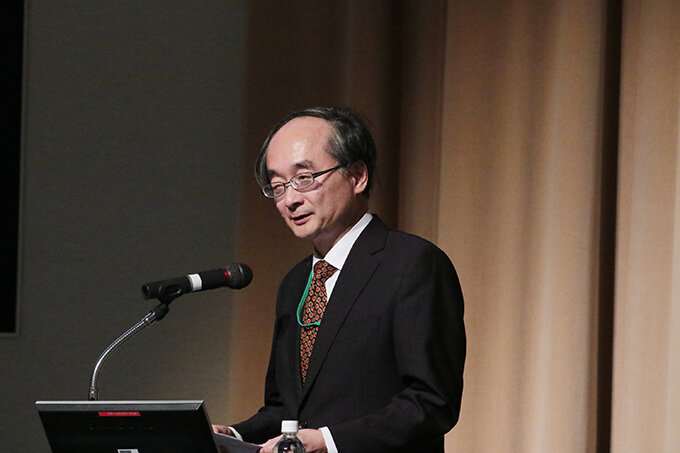
Mr. Satoshi Kamata closed the symposium by thanking the speakers and audience for their excellent ideas and active discussion. He stressed the importance of the symposium's interdisciplinary approach to traffic and safety as rapid changes are seen around the world. He closed by describing the in-depth discussion of issues surrounding bicycles, the workshop to be held the following day on November 18, and the important activities and research of IATSS.

